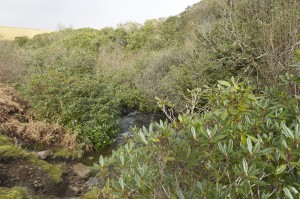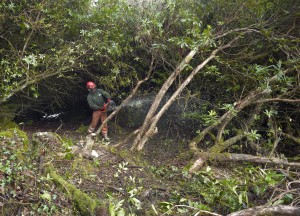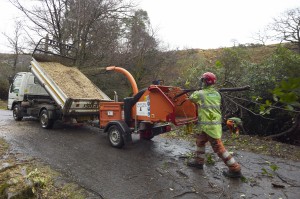As part of the South Hams River Improvement Project (SHRImP), the Trust has funding available to carry out coppicing works along river banks in the South Hams to improve the light regime to match requirements for fish across their in-stream habitats. Typically, these coppicing sites are within farm land and include native tree species.
However, one site we identified, below the Avon dam and within Dartmoor National Park, provided a unique setting and opportunity to fulfil our target to manage the light regime whilst also removing the invasive species rhododendron. This non-native shrub had spread to cover a ~0.6ha area of moorland. Both Natural England and Dartmoor National Park were in full support of clearance.
Project Officer, Karensa Lawrie, said, “Being a non-native species that grows in dense stands, rhododendron out-competes many of our native species and provides very poor habitat for native invertebrates and other wildlife. The rhododendron at this site had also suffered from previous outbreaks of the plant disease Phytophera and the clearance work provides the added benefit of reducing future disease risk.”
The SHRImP project was able to fund clearance of the Western bank alongside the access road to the dam, which is also a popular public footpath. The shrubs were cut, burnt and chipped on-site and the stumps were treated with the herbicide glyphosphate to prevent regrowth.
A number of native trees have been planted to replace the rhododendron and will provide some shade cover where required. In time, these will establish to create the desired balance of light and shade that will benefit fish spawning and rearing within this stretch of the River Avon. We are keen to work together with the landowner to remove the larger stand on the eastern bank in subsequent years.



